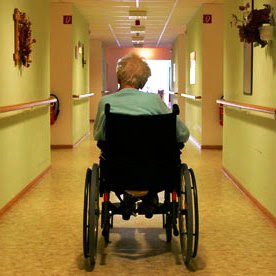What is spinal muscular atrophy (SMA)?
Spinal muscular atrophy (SMA) is the collective name for a group of progressive muscle disease, also called neuromuscular disorders. The cause of these disorders is impairment of the motor neurons in the spinal cord with a poor muscle function as a result.
There are three different types:
- Spinal muscular atrophy type 1. This type occurs only in babies and has a serious lapse by respiratory paralysis. The babies are often stillborn or die for the second year.
- Spinal muscular atrophy type 2. Reveals itself in children between six and eighteen months. By later revelation, children can still learn to normal walking and sitting.
- Spinal muscular atrophy type 3. Reveals more than 18 months after birth. The mildest and most common form of spinal muscular atrophy.
Spinal muscular atrophy is transferred autosomal recessive. The reason probably lies on chromosome 5, wherein three genes are involved. Children can get SMA if both parents are carriers.
By a failure of the SMN gene, the anterior horn cells are affected.
Diagnosis
The diagnosis is usually made with a DNA test, which will be established in 92% of cases SMA disease.
If it is not clear after DNA analysis, or there is an abnormality, it is possible to measure abnormal muscle activity with an electromyogram or to take a muscle biopsy.
Development
On the whole, the three types of the same. The muscle function of patients is almost normal to the manifestation of the disease, in which muscle function declines because the muscles are not used (can be) because of damage to the nerves. The immediate effects are dependent on the age at which the disease manifests itself. A baby has not been able to develop as much muscle causing the deterioration of muscle function by SMA is almost always fatal, whereas a more adult muscle can miss without the consequences are serious.
The speed at which the muscle function decreases does not have to be constant. By example, for a long time not to perform a certain action, the possibility exists that they will not be able to perform this operation. After a brief period where one should stay, in bed, for example by another disease, patients have a lot of trouble to redo operations and some operations can not be performed.
Spinal muscular atrophy (SMA) treatment and research
Spinal muscular atrophy is no cure at this time. Only effects of the disease can be treated to a certain extent.
A common result is curvature of the spine (scoliosis).
Physical therapy focuses on movement and posture advice. This is to ensure that muscle functions can be used as long as possible by stimulating it with (muscle) movements. Occupational therapy can help in adjusting the material and help you with the application of provisions to increase the quality of life and comfortable to sit / lie / transport.
By muscle relaxation, as with many muscle diseases, artificial ventilation is needed. In an early stage, this is only to support, but at a later stage, the patient is practically dependent on ventilation equipment.
There is much scientific research on these diseases.

